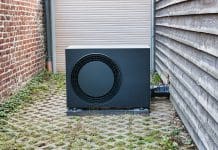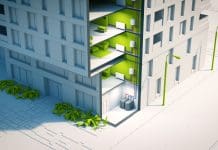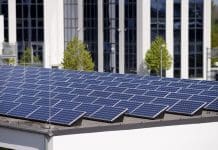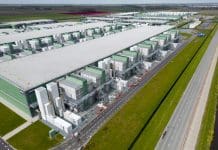Malcolm Blakey, owner of Finedale Construction, takes a look at how the construction industry can help achieve the environmental challenges we face today
We believe it is important to always be aware of the impact of our industry right from the very first designing stages all the way through to construction and completion. Significant, realistic, and affordable changes need to be made for the benefit of the environment as well as ensuring a sustainable plan for business continuity.
We have begun to introduce a number of plans that are easily achievable and will ultimately lead towards helping the immense environmental challenges we all face today.
Over the years, Finedale has learnt a lot about our impact on the environmental challenges and how to better our planet. One of our more unique ideas lies in the form of a wildlife corner which we implement into all of our residential developments.
During the design process, we designate an appropriate spot within the complex to house wildlife. Our insect hotels, hedgehog houses, bird and butterfly boxes all lead to a healthy ecosystem for wildlife to flourish in their homes without disruption. Healthy ecosystems clean our water, purify our air, maintain our soil, regulate the climate, recycle nutrients and provide us with food so they’re incredibly important and beneficial to our lives.
Also, Finedale chose to not use concrete bottom panels on our fencing, we always use traditional fencing that allows Hedgehogs and other wildlife to move through the gardens and into other environments.
In addition, Finedale supplies each completed property with a children’s wildlife guide, as education is probably the most important factor when it comes to tackling the environmental challenges. The guides explain which animals and insects they may be able to spot within their corner and how each one of them plays their part in the environment.
Furthermore, we carefully select which plants to use, keeping the best homes and food for our wildlife, ensuring that the garden areas are biodiverse. This encourages multiple beneficial elements such as seed disposal, pollination, natural waste removal, and of course, the design will also look great!
Being eco-friendly is just as important for our animals as it is for us. Due to this, we also have eco-friendly options for the property buyers, for example, using water butts for garden watering. Whilst the practical side comes first we also want to design aesthetically pleasing concepts throughout our properties so every addition will be practical but also visually trendy to encourage continued use.
Transitioning towards environmentally-friendly processes
The elements listed above are focused on the efforts of the buyer provided by the construction industry. But the question still lies, as to how during the construction industry can play our part. The answer lies in the design process. Finedale have provided a number of factors which we feel are achievable and critical in helping this transition happen.
- Natural light is key to minimising buyers use of artificial lighting, having natural light reduces the cost of living so is multi-beneficial. To ensure there is as much natural light as possible this must be kept in mind and designed at commencement of a build scheme.
- There are many environmentally friendly materials that can be used both through building and design, for example, bamboo, recycled steel, cotton wool, cork and good old fashioned wood. Also, when in the design stages of developments, look at ‘unused’ areas which are not adding any value both in practical and value for you as a developer and look to convert these into green areas, this not only adds an environmentally friendly aspect but a visual one too.
- Re-cycling as everyone knows is extremely important. Where possible, recycle materials and also source recycled materials too. Maybe even look into your own recycling and see how you can recycle, remake or upcycle your products.
- Where your scheme is financially viable, introduce eco-friendly energy systems. Make use of roof angles for solar panels and loft spaces for low energy clean air solutions. As solar energy relies entirely on gathering energy from the sun and converting it into electricity and hot water for homes, incorporating these into designs means that buyers will not be producing any greenhouse gases or contributing to global warming. Overall, solar panels can reduce the carbon footprint of your home by 80% in one year.
- Where possible, and when the space of the site allows, you could also segregate waste removal. Separating recyclable materials into separate skips is a simple and effective step, make sure to research the different waste removal companies available who provide appropriate waste disposal methods.
- Also, consider installing eco-friendly, affordable systems into the houses, for example, this can include eco boilers and air filtration systems. Modern technologies are often developed to be eco-conscience and reduce costs too.
- Look at exchanging in old equipment for newer versions, if you are in a position where a new product is needed or an old one replaced, look to source newer models which release less carbon emissions.
- Train your staff on the importance of fuel emissions, noise pollution and ensure that machinery and plants are only switched on when operational. When machinery is left standing it should be turned off as well as being well maintained to avoid any unnecessary noise or fuel pollution.
Training and education can make the biggest difference. Having a team that is up to date on the latest developments and advances in the sector, its products and materials will result in an environmentally conscious business. As new resources become available, we recognise our current process and method of completion may need to adjust and change for ongoing support into our countries effort for environmental change.
Being green is a goal most companies want to achieve, whilst we hope to be as green as possible it’s also important to remember that as a sector we can do so much more to start our journey towards a more environmentally friendly future, tomorrow.
Malcolm 0Blakey
Owner
Twitter: @finedalec
LinkedIn: Finedale Construction














